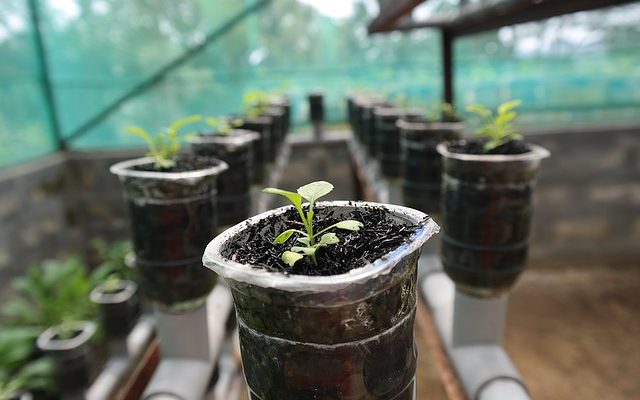Indoor agriculture’s tipping point
In his 2000 book, The Tipping Point: How Little Things Can Make a Big Difference, Malcolm Gladwell defines the tipping point as, “the moment of critical mass, the threshold, the boiling point.” Listening to John Reich, Scientific Program Director at the Foundation for Food and Agriculture Research (FFAR), discussing the adaptation of crops to indoor environments, I found myself thinking a lot about the tipping point. Indeed, much of his lecture convinced me that we are at the right point in history to “tip” the world’s largest industry toward a more sustainable future.
A consortium-based approach to the future of food
We are at a moment when urgent action is needed to redress the problems facing our food production systems. At this same moment, we are poised to take advantage of technological advancements to make the shift towards sustainable, climate controlled agriculture. These advancements include new production systems like vertical farms, the application of artificial intelligence and big data, and advancements in the ‘omics: genomics, transcriptomics, proteomics, metabolomics, etc.
John Reich and the FFAR envision a future of food production with completely controlled environments and indoor agriculture. How we will get there is the big question. Other factors that make up the tipping point include:
- An increase in venture capitalism interest in the sector
- An increase in the number of indoor production facilities throughout the world.
- Shifting consumer demand for local, sustainably-produced, wholesome foods
Put together, these factors catalyze more research, investment and implementation from public and private stakeholders. This makes now the most opportune time to start adapting a greater variety of crops to indoor environments. There are many questions regarding how best to go about such a major shift in food production.
Forming the right partnerships to speed the process of indoor crop adaptation
Problem #1 is risk: research in crop adaptation and domestication is high-risk, but it comes with high rewards. A goal of the FFAR is to reduce this risk of research by sharing it among multiple stakeholders. Reich envisions a consortium-based approach made up of:
- Seed companies
- Technology companies
- Research institutes
- Food producers
By forming the right partnerships, risk among the individual stakeholders is reduced and the dollar contribution of each member goes a lot further. This consortium (partnership) approach to crop adaptation helps speed up the diversification of crops grown indoors; in turn this spurs economic growth and enhances food security.
In pursuit of the high-value indoor crop
A further advantage of the consortium-based approach is in actual crop diversification. One of the biggest criticisms of indoor agriculture is a lack of crop diversity potential. Collaborative governing structures speed up the process of adapting crops through the sharing of data and research tools. There is no getting around the fact that adapting crops to indoor environments is a long-term process; there is no magic formula for a successful indoor crop adaptation. But Reich identifies these important factors:
- The right production-based traits, including things like:
- Crop architecture
- Production time
- Yield
- The right consumer-driven traits, including:
- Nutrition
- Flavor
- Medicinal properties
- A low input of resources, always working towards minimizing the environmental toll of food production.
A crop with the right production-based and consumer-driven traits creates the profitability that drives the whole system forward. Indoor, climate-controlled agriculture allows our production systems to focus on creating crops with high-value traits rather than accounting for traditional concerns like disease resistance, drought tolerance or heat-stress tolerance.
Moving past the tipping point
How do we develop and adapt these high-value crops? Reich offers one possible pathway: to focus on a select few crops, enhance our understanding of them in climate-controlled environments, and then apply this knowledge to other crops. By focusing on creating a few technologically-advanced crops, we more quickly advance the entire science of adapting crops to indoor environments. As he put it:
“Collaboration focuses on the interaction between genetics and environmental conditions to increase our understanding of desirable phenotypes that can lead to the production of high-value crops which are also profitable”
The tools necessary to make this happen are developed through successful partnerships. Pooling resources will prove to be the most effective way to propel the indoor agriculture industry and the future of food production through its current tipping point.
Click here for a youtube clip of the discussion
AVF Broadcast Manager Jason Moon is conducting an interview with Sally Rockey of the FFAR for the AVFfm podcast series.


